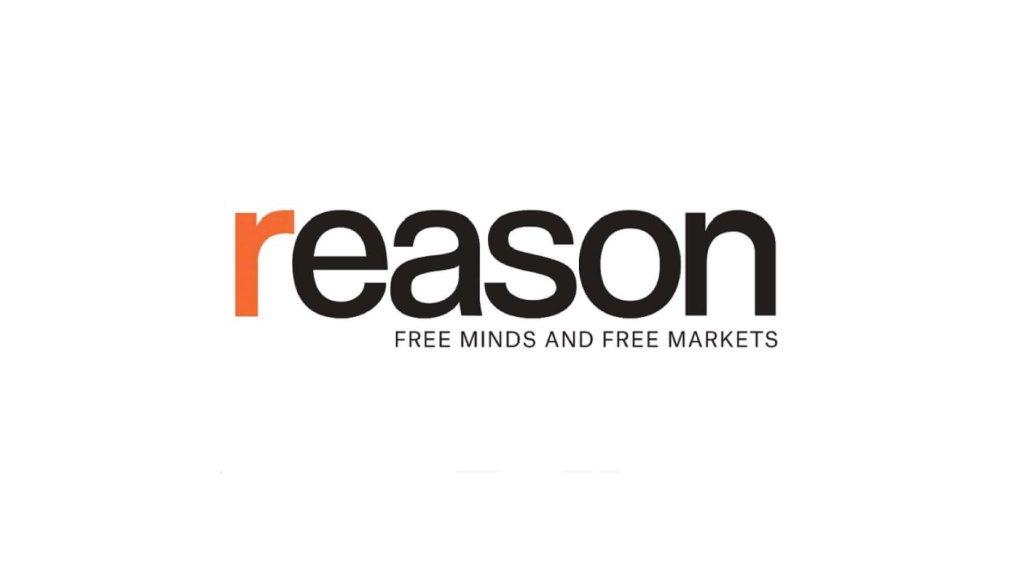Why Are Immigrants From Tropical Countries Coming to This Arctic Outpost?
This is part of Reason‘s 2025 summer travel issue. Click here to read the rest of the issue.
On Saturday night, I had Indian food at a mosque potluck. The next day, I went to an African church service full of gospel music. In between, I went to a hockey game and stood on sea ice to watch a dogsled race. That’s life in Iqaluit, a Canadian boomtown on the edge of the Arctic.
The semiautonomous Nunavut Territory has always been different from the rest of Canada. The majority of the people there are Inuit (singular: Inuk), a people known for their colorful animal skin fashion, soapstone carvings, and gregarious sense of humor.
“I love traveling in the Arctic. You’ll always find something weird in the Arctic. Inuit are something funny,” said Inuk comedian Mary-Lee Aliyuk, wearing a sealskin skirt, during the Stand-Up North: Bush Party Baby tour.
On my flight into Iqaluit, announcements were read in English, French, and Inuktitut, the Inuit language. The whole city is filled with signs in the otherworldly Inuktitut ᐃᓄᒃᑎᑐᑦ script. Fresh off the plane, I waited in line at a shop behind a traditionally tattooed Inuk mother wearing an amauti ᐊᒪᐅᑎ, a sealskin parka with a built-in baby pouch just below the hood.
But Iqaluit ᐃᖃᓗᐃᑦ is also distinct within the Arctic. A mining boom and a buildup in the Canadian government’s presence has brought a lot of demand for labor to the territorial capital. (Nunavut ᓄᓇᕗᑦ boasted the fastest-growing economy of any Canadian territory or province in 2024.) It’s drawing in a diverse and sometimes unexpected collection of people, including immigrants from tropical countries.
This multicultural outpost may be a picture of the future. As climate change shrinks the polar ice caps, governments and business interests are scrambling for a piece of the newly opened frontier. In 2018, China declared itself a “near-Arctic state” and published a grand polar strategy. Both major Canadian political parties are promising a military buildup in the Arctic. U.S. President Donald Trump has infamously threatened to annex both Greenland and Canada.
Different governments have taken different approaches to this competition. Norway is trying to replace immigrants with the “permanent presence of Norwegian citizens” and “family-based community” in Svalbard, an Arctic island traditionally considered a neutral, visa-free territory, New Lines reported in November 2024.
But Nunavut has struck an inviting tone. “Limited local human resources limits the growth of our economy,” Annie Cyr-Parent, the territory’s director of minerals and petroleum resources, told the Nunavut News in 2024. The Canadian Centre for Economic Analysis estimates that Iqaluit’s work force would shrink by 30 percent over the next decade without immigration.
“As Inuit, we know we are always friendly to outsiders,” Nunavut Premier P.J. Akeeagok ᐱᔭᐃ ᐊᕿᐊᕈᖅ told Nunatsiaq ᓄᓇᑦᓯᐊᖅ, a local newspaper, in 2022.
Out of 6,870 people in Iqaluit, slightly more than half are Inuit, according to the 2021 census. Among the non-Inuit population, 850 are listed as “visible minorities,” including 375 black people, 215 Filipinos, and 95 South Asians. Iqaluit experienced a 110 percent growth in the number of foreign immigrants from 2011 to 2021, and 10 percent of the city’s residents are now immigrants.
I visited Iqaluit at the end of Toonik Tyme ᑐᓂᖅ ᑕᐃᒻ, the local spring festival, which happened to line up with Easter this year. (The main character of North of North, an Inuit sitcom filmed in Iqaluit, sums it up as “Whoo-hoo! We didn’t die this winter!”) The temperature during the day dipped just above freezing, and wet slush dripped down the hills. The surface of Frobisher Bay, however, was still frozen solid. The soundtrack to town was the low rumble of snowmobiles zipping across the sea ice.
‘A Lot of GoodWill’
Though Inuit nomads have roamed the area since time immemorial, Iqaluit itself is a relatively new city. With the help of an Inuk guide named Nakasuk ᓇᑲᓱᒃ, the U.S. military established an airfield on the shores of Frobisher Bay during World War II, part of a string of bases stretching from the northwestern U.S. through Canada and Greenland to Europe. A town grew around the air transit hub, and voters chose it as the capital of the new Nunavut Territory in the 1990s.
Islam arrived not too long after. The Pakistani-Canadian boiler inspector Syed Asif Ali founded a mosque, Masjid Iqaluit, in 2015. He had applied for a job listing in Nunavut, not realizing how far north the region was until he found out he couldn’t drive to his new hometown. “I tried not to go, but my wife said, you go and establish a mosque,” says Ali, who has since left Iqaluit and taken a job as chief gas inspector for the province of Saskatchewan. “The message of Allah has not reached there, and it is our duty to send that message.”
There are indeed a handful of Inuit who converted to Islam after the mosque was built, though I couldn’t interview any. A mixed Arab-Inuk coup
Article from Reason.com

The Reason Magazine website is a go-to destination for libertarians seeking cogent analysis, investigative reporting, and thought-provoking commentary. Championing the principles of individual freedom, limited government, and free markets, the site offers a diverse range of articles, videos, and podcasts that challenge conventional wisdom and advocate for libertarian solutions. Whether you’re interested in politics, culture, or technology, Reason provides a unique lens that prioritizes liberty and rational discourse. It’s an essential resource for those who value critical thinking and nuanced debate in the pursuit of a freer society.




